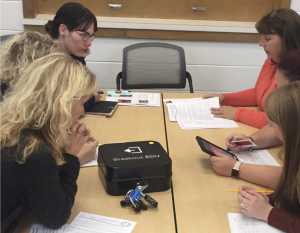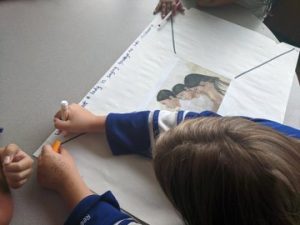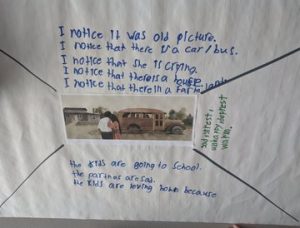Have you ever watched a show called Undercover Boss?
An average episode of the hour long program shows a CEO or top tier exec going incognito to better understand the work flow, flaws, and family of an organization. The show makes sure that the top dog is put alongside some pre-selected employees(often outspoken) who, fearlessly or not, walk the “newbie” through a day in the life at their job.
In most episodes, there comes a moment when a budget-line-watching-number-crunching-corner-office-seat-occupier realizes how their top down edicts are negatively impacting the organization until they see it from the perspective(s) of the workers. At this point in the show, regardless of profit and loss statements, the executive works to make things right, realizing that if things were better for the workers, the bottom line would benefit too. A win win outcome right?
I love TV. It creates narratives to suit itself. Moreover, despite a proliferation of reality TV programs, the medium remains irreal. Much like any Disney offering, TV has conditioned us to expect a happy ending that is far away from everyday experiences. If all goes accordingly, good always triumphs over evil, a hero will emerge, and on the show Undercover Boss, at least, some lucky employees will help their bosses to miraculously see the light and improve the company. This is not the current case between the government and public education in Ontario.
I would love it if our elected officials had the courage and conviction to do this for longer than the time it takes to convene a photo opp or craft a sound bite. I wonder why this is rarely, if ever, true when it comes to government and education. Other than clichés about how much the students come first and the importance of educators, hollow words do not mirror the devastating actions that senseless cuts are having on public education.
As such, we have seen neither the current Premier nor the Minister of Ed spending any meanigful amount of time with the people on the frontlines like an undercover boss. Since they are making decisions that affect everyone working in education, we all deserve to see and know that they are completely aware and informed.
I have never heard genuine words of understanding from elected officials that qualify them to make the decisions they are making which will ultimately impact our society for generations to come. In its wallet.
With so much attention placed on the bottom lines of provincial budgets, it becomes an easy target for outsiders to look across a spreadsheet and proclaim cuts can be made and no one will ever feel it without duty of care or context. This is not unique to education either.
This past year has revealed many glaring differences about how information is being (mis)used, bent, and or weaponized to suit political agendas. As such this misuse of information seems like systemic micro and macro-aggressions towards our profession, the public education system, and our students.
Which leads me to this question. How can a system of the people for the people be so myopic in its duty and dilligence? Isn’t the idea of education for all to actually provide education and therefore opportunity for all? With all of the time that governments and bureaucrats spend poring over the books, they have conveniently missed the direct cost implications of intentional systematic underfunding.
Here are some things to consider.
- Loss of education opportunities limits the number of skilled and quality workers contributing to the economy. That means more spending and tax dollars from higher wage earners.
- Economic cuts reduce opportunities for many people already living on the margins of society. That means cuts to education is a form of systemic discrimination towards many communities.
- Cuts to course offerings hurt the wrong people when those who can afford it can simply shift to a private school.Even my elementary students are shaking their heads about how traditional courses that lead to Post Secondary Science and Engineering courses are being limited or disappearing from local high schools. (see what is happening in my board @ YRDSB)
- Cuts to OSAP hurt the wrong people too. Rich kids will still go to post-secondary school, while marginalized students will have their futures moved further out of reach.
- Refusing to fund education to the fullest is a recipe for social disaster. If we cannot agree on this, then we are agreeing to leave the next generation worse off than the last. When private schools are advertising that they have the courses that have been eliminated from our public schools, there is a problem.
None of the above are acceptable.
Our parents did not struggle and sacrifice for this. My mom and dad did not work full and part time for this. Neither did yours. Students and their families do not make sacrifices for this. No one would ever vote to limit the future of opportunity of its youth. Neither would a sensible and caring society allow anyone to slip through the cracks. Unless they had an agenda to undermine Canada as a civil society. The actions of our elected officials appear specious at best when it comes to education.
Our work brings value far beyond any budget lines could ever define because it brings human possibilities forward everyday. Reducing and removing opportunities also removes relationships that empower students into the future. Restricting or taking away someone’s access to education is simply an affront to all humanity. We are difference makers, miracle workers, and advocates for all of our students. We are working hard to change the narratives that have become a distraction in public education.
We are fighting to be heard and respected, let alone seen and understood, by politicians who prefer to take cover behind short sighted populist agendas that seek to serve the bosses rather than the people who work for them. It’s time for their eyes and minds to be opened.
What if every school could welcome an undercover boss(politician)? Maybe then, these decision makers would truly see the commitment, struggle, and value of our fight for students, their families, and this noble profession. My door is always open. No photographers please. It’ll disrupt the learning.
Fight on. #CutsHurtKids #ETFOStrong
Further reading
York board says bigger class sizes forced cancellation of 123 high school courses.
What Exactly Is Happening To Ontario’s Education System? What You Need To Know
Financial facts on Canadian prisons

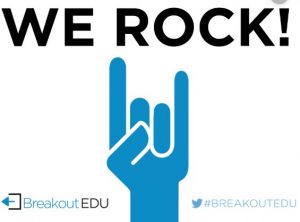
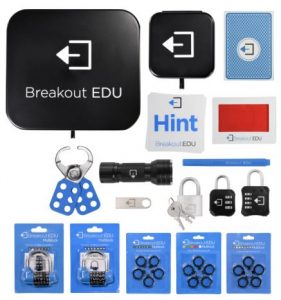 https://www.breakoutedu.com/
https://www.breakoutedu.com/